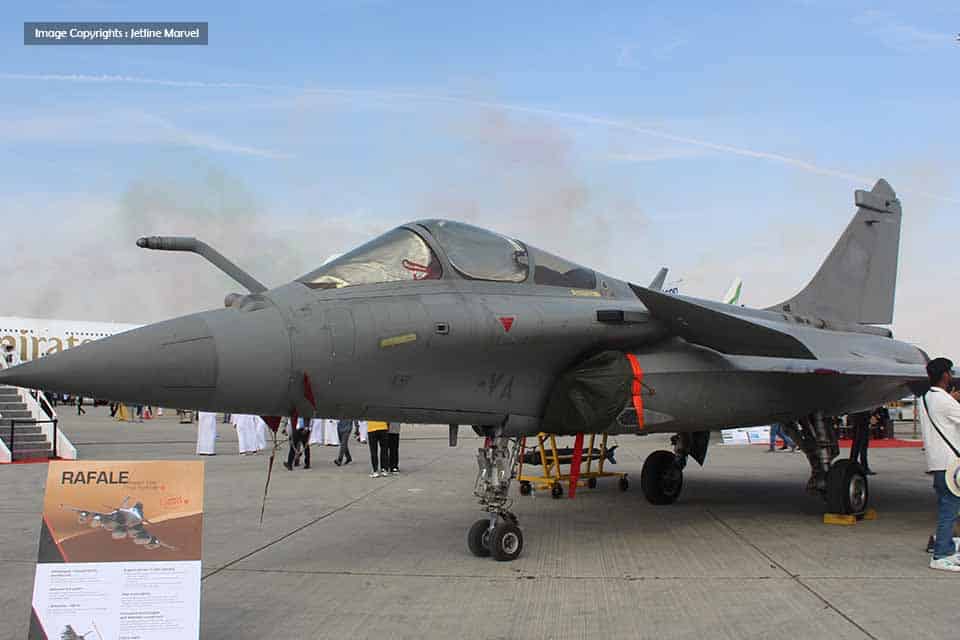Aviation
Historical contract for the acquisition of 80 Rafale F4 by the United Arab Emirates

In the presence of the President of the French Republic, Emmanuel Macron, and Sheikh Mohammed ben Zayed Al Nahyane, Crown Prince of Abu Dhabi and Vice-Commander of the Armed Forces of the United Arab Emirates (UAE), Eric Trappier, Chairman and CEO of Dassault Aviation, signed a historical contract with Tareq Abdul Raheem Al Hosani, CEO
(Saint-Cloud, France, 3 December 2021) – In the presence of the President of the French Republic, Emmanuel Macron, and Sheikh Mohammed ben Zayed Al Nahyane, Crown Prince of Abu Dhabi and Vice-Commander of the Armed Forces of the United Arab Emirates (UAE), Eric Trappier, Chairman and CEO of Dassault Aviation, signed a historical contract with Tareq Abdul Raheem Al Hosani, CEO of Tawazun Economic Council, in charge of security and defense acquisitions, for the acquisition of 80 Rafale F4 for the United Arab Emirates Air Force & Air Defence (UAE AF & AD).
The Rafale F4, for which the Emirates Air Force will be the first user outside France, will provide the Emirates armed forces with a tool capable of guaranteeing sovereignty and operational independence. This contract is the result of total mobilization by Dassault Aviation alongside the Emirates Air Force and comes on the back of a more than 45-year long relationship of trust between the United Arab Emirates and our company, built on the Mirage family of fighter aircraft, notably the Mirage 2000-9, the modernization of which began two years ago.
“The sale of 80 Rafale to the UAE Federation is a French success story: I am very proud and very happy as a result. I wish to thank the authorities of the Emirates for their renewed confidence in our aircraft. After the Mirage 5 and Mirage 2000, this Rafale contract consolidates the strategic relationship that binds our two countries and the satisfaction of the Emirates Air Force, a long-standing and demanding partner of our company. I wish to underline the quality and effectiveness of the relationship between the French authorities and industry, which contributed to this success by team France.
This contract is excellent news for France and for its aeronautical industry, for the entire ecosystem of 400 companies, both large and small, which contribute to the Rafale: this represents thousands of guaranteed jobs in our sector for the coming decade. This contract, which is the largest ever obtained by the French combat aeronautics industry, consolidates a national industrial base, which is without doubt unique in Europe, comprising as it does major groups and SME/SMIs, around a company which has been the prime contractor for all the generations of military and civil aircraft for the past 70 years. The success of the Rafale with our armed forces and its sale to the UAE Federation, as well as its export to five other countries who are already customers, clearly shows that French combat aviation is an internationally recognized center of excellence on the national industrial landscape.”

Aviation
Airbus Enhances A350 Cabin with 10-Abreast Seating

Airbus has announced a new partnership with Jiatai Aircraft Equipment, a Chinese aircraft seating manufacturer, to supply upgraded economy-class seats for the A350 widebody series.
This collaboration, unveiled at the 2024 Airshow China, focuses on developing a newly designed economy seat tailored for the A350‘s New Production Standard (NPS) cabin.
One of the key features of the NPS cabin is the ability to accommodate 17-inch wide economy seats, compared to the previous 16.5-inch wide seats that airlines were limited to in the A350’s earlier configurations.
British Airways Unveils Its Brand-New First Class Cabin for the Airbus A380
This change is made possible by the expanded space in the NPS cabin, which is 35 inches longer and 4 inches wider than the previous version. This extra space is achieved by slightly moving the cockpit wall forward and shifting the rear pressure bulkhead back by one frame.
The wider cabin allows airlines to add up to 30 extra economy seats without compromising comfort. For airlines opting for a 3-4-3 seating layout, the 17-inch wide seats are an excellent choice for a more comfortable passenger experience. However, some airlines, such as Iberia, may choose to retain a 9-abreast layout with wider seats for added comfort.
The NPS cabin also offers enhanced flexibility for airline operators. One major advantage is the ability to easily switch between a 9-abreast and 10-abreast seating configuration without requiring significant downtime for aircraft reconfiguration. Airlines can use the same seat rails, tracks, and IFE interfaces, making the transition smoother and quicker.
Etihad Airways Unveils 10 Exciting New Routes for 2025
In addition, the design of the floor attachments and air-conditioning systems has been optimized for 10-abreast seating, meaning airlines can upgrade their cabins without needing to make substantial modifications to the aircraft’s structure.
Though it’s still unclear when Jiatai’s economy-class seats will be officially added to the A350’s Buyer Furnished Equipment (BFE) catalogue, the collaboration marks a significant step toward enhancing the A350’s cabin offerings.
With this partnership, Airbus is providing more seating options for airlines, ensuring that they can meet diverse customer needs while improving overall operational efficiency.
-

 Aviation2 months ago
Aviation2 months agoMicrosoft Flight Simulator Raises $3 Million to Bring Back the An-225 Mriya
-

 Airlines2 months ago
Airlines2 months agoQatar Citizens Can Travel to the United States Without a Visa
-

 Aviation2 months ago
Aviation2 months agoQatar Airways bans these new Electronic Devices on plane
-

 Airlines2 months ago
Airlines2 months agoJapan Airlines Rolls Out Free Domestic Flights to International Passengers
-

 Travel2 months ago
Travel2 months agoQatar Airways Launches Four Additional Flights from Amsterdam
-

 Defence2 months ago
Defence2 months agoWhich Country Has the Largest Fleet of Fighter Aircraft?
-

 Airport2 months ago
Airport2 months agoWestern Sydney Airport Welcomes Its First Plane After 6 Years of construction
-

 Airlines4 days ago
Airlines4 days agoDAMAC Air: Dubai’s New Luxury Airline Offers Free Flights for Registration








